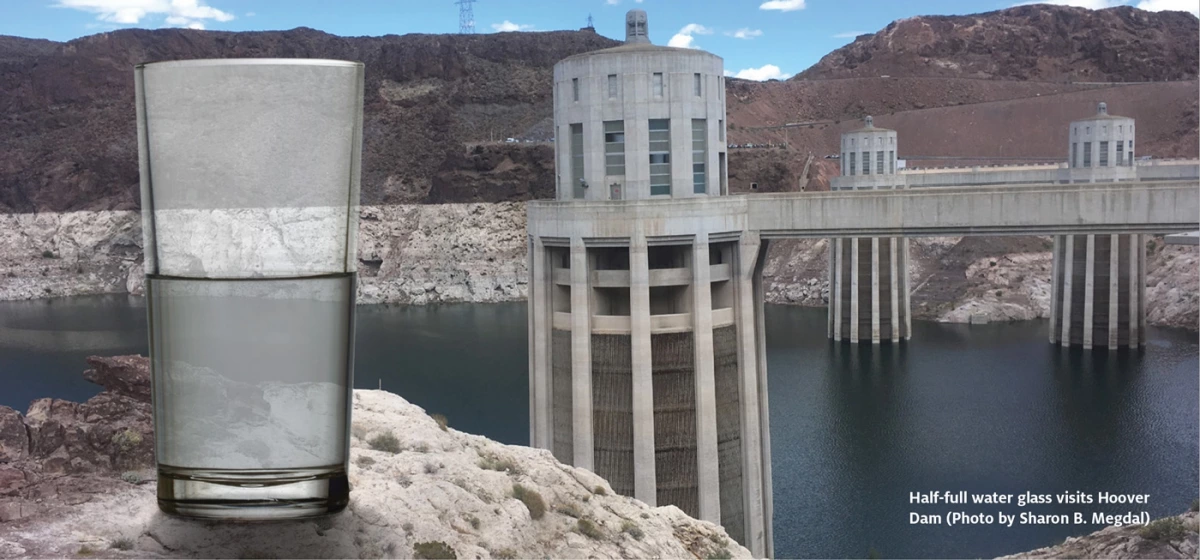
Each Spring Semester I teach a graduate class, Water Policy in Arizona and Semi-arid Regions. This year marked my return to teaching after a one-year hiatus due to my 2020 sabbatical. It was my first experience with a semester-long virtual course. Perhaps because of the two-year gap between classes and/or heightened interest in water management in these challenging times, I hosted the largest class ever – 18 students, including two enrolled auditors. Reflecting on the semester’s experience, I am very upbeat about the high level of interest and capabilities of my students. Though we are facing unprecedented water challenges, I am encouraged by the work of our emerging leaders. I found the students ready to tackle the water and environmental challenges we face as the growing stresses to our physical and human systems become more interwoven and complex.
Because the water policy context changes over time, I approach each Spring Semester almost as if teaching a new course. There are some elements that stay the same, such as providing an overview of Arizona water policy and explaining the role of recharge in furthering water management goals. Yet, especially with the two-year gap between classes, much had changed. For example, in 2019 the Lower Colorado River Basin Drought Contingency Plan (DCP) had just been approved and Colorado River Basin runoff was good. Two years later, we risk shortage declarations that could go deep. No one anticipated the pandemic, which has generated heightened awareness of the need to address access to clean water for tribal communities. An ever-changing water picture means that readings and topical coverage during class meetings must be modified.
One advantage of the virtual class format was that distance from Tucson did not stop guest experts from joining the class. Speakers like former Arizona Governor and US Interior Secretary Bruce Babbitt, representatives from the Navajo Nation, and Roberto Salmón, former International Boundary and Water Commissioner for Mexico, could easily join us from afar. However, the downside of virtual class meetings cannot be overlooked. Distinct disadvantages were that we could not go on a field trip to see water management in action, nor could the students interact with the speakers as they would have under normal circumstances. Nevertheless, I did feel that I got to know the students over the course of the semester. I hope the students felt the same.
In addition to class discussions, the students’ research papers very much reflected the challenges we face in Arizona, the broader region, and across the world. Groundwater always figures prominently in the class. Students examined the implications of current regulations in the Active Management Areas (AMAs), the lack of groundwater regulations outside the AMAs, and what we might learn from California’s bold approach to groundwater regulations. Multiple papers addressed the imbalance of water demand and supply and drought. Papers investigated water transfer and transport, as well as water augmentation opportunities, such as desalination and water reuse. Tribal water management and perspectives were featured in papers on uranium contamination, tribal recharge and recovery, and the potential for water policy collaboration between Indigenous and non-Indigenous communities. Issues at the Arizona-Sonora border were considered from multiple perspectives, and one paper explored what the US might learn from Israel’s approach to developing and deploying innovative water technologies.
An interesting implication of missing the all-day field trip was that we could consider more topics through class meetings—and there were so many topics to explore. Yet, that additional class coverage came at a steep price. I have always considered our all-day field trip to Tucson Water’s recharge and wetlands sites, Central Arizona Project’s Twin Peaks Pumping Plant, and a hosted lunch to be the highlight of the class. The field trip provides not only the opportunity for students to see water management in the field, but also the chance to speak with experts in an informal setting.
Over the semester, I learned a great deal about the advantages and disadvantages of the virtual classroom, and I will do some things differently if I have to teach a full semester virtually again. However, my most important lesson from the Spring 2021 semester is that students are preparing themselves and eager to address head-on the grand water challenges we face. I am optimistic. The future is not as bleak as it may sometimes seem. The water glass is half full.

